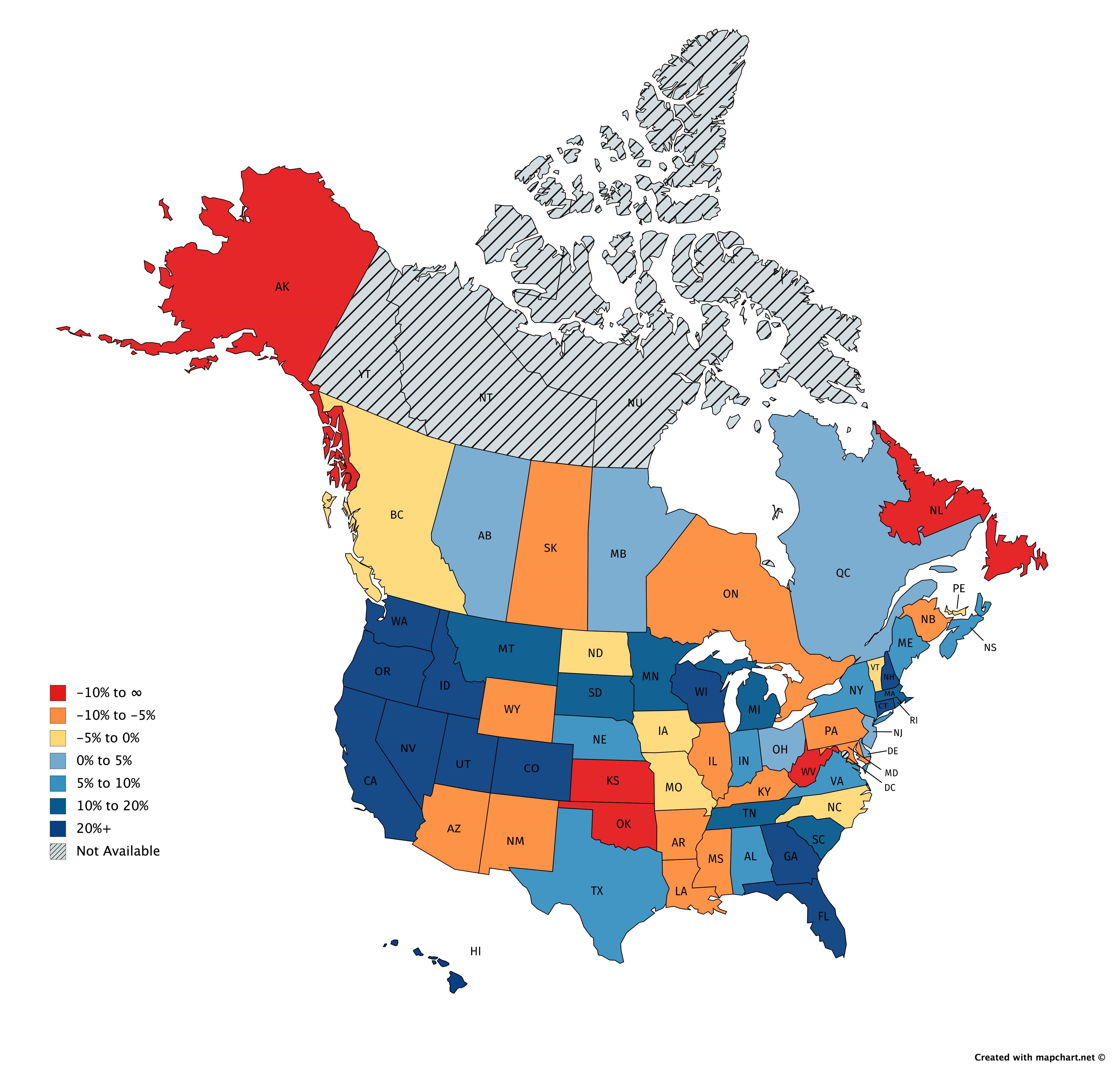[the_ad id=”12142″]
Yesterday I looked at the situation at Purdue University in Indiana and noted that one of the things permitting the “miracle” of frozen tuition was the significant increase in state appropriations over the last few years. This made me wonder whether Indiana was an outlier or not, and indeed how states had been performing in the recession’s aftermath.
About ten years ago, as the economic crisis was starting to take hold in the United States, things started to turn really bad. If I recall correctly, at one point state appropriations per student fell by about 30% (though a lot of this had to do with a flood of students returning to school during the recession – a denominator effect rather than a numerator effect). Things were so bad, I remember one VP from a big western Canadian university boast that he was getting applications for vice-dean positions from Deans in the California and Washington systems because the pay was better up here, and we still believed in public education. And many still have that image in mind when they think of policy trends in the two countries – Canada, the good guys, spending money on education and America, the dysfunctional and fiscally challenged nation mired in constant cut backs.
The problem is, this caricature has essentially nothing to do with present-day reality.
A few things have happened since the turn of the decade. For one thing, our petro-currency ain’t what it used to be. It traded roughly at par with the USD for much of the period from 2007 to early 2013; now it’s trading at 78 cents or so, which makes our salaries less competitive. But also, state and provincial fiscal rules have started working in different directions. In the US, where states are mostly prohibited from deficit financing, spending on things like higher education are highly pro-cyclical. In Canada, where provinces can and do borrow quite a bit, expenditures in higher education often rise in downturns and then fall in good times in line with basic Keynesian fiscal principles. As a result, one would expect some of those funding trends from a decade ago to be reversing.
And boy are they ever. I took data on state appropriations from what is known as the “Grapevine” Survey of American state appropriations from 2012-2013 and 2017-18, and mined Canadian provincial budgets and public accounts to get similar data for Canada (it’s not 100% apples-to-apples, but as you’ll see in a second that doesn’t really matter because the results are so stark that even a less-than-perfect methodology can pick up the main story). I adjusted the data for CPI in the two countries. And here’s the short story:
Over the past five years, Canadian provincial expenditures on PSE are down 2.9% after inflation. US State expenditures are up 12.3%.
Now, to be fair, there’s still not much of a comparison in terms of levels of state/provincial spending. Adjusted for population size and/or GDP, our provincial governments outspend American state governments by about 2 to 1. But their institutions get a lot more (federally student aid-subsidized) tuition dollars so it balances out when it comes to total spending. And the point is, their trendline is heading in the right direction while ours is heading in the wrong one. This matters if you want to hire and keep good staff – especially if you throw in currency depreciation issues, too.
Now, of course, those national averages hide quite a bit of variation within each country. Within Canada, we have Nova Scotia, where funding rose by 11% (though not always transparently), but we also have Newfoundland, where provincial funding fell by 23%. The spread in the US is even greater: California and Florida have seen state funding rise by over 40% over the last five years, but Oklahoma and West Virginia have fallen by 20% or more. Generally speaking, the really big gains in funding have been in the western states.
Click Map to Expand
And of course, it’s not just state/provincial appropriations where the Americans are beating our brains out. While the federal Liberals were orchestrating some massive cheerleading for adding $1.2 billion over five years, the Americans increased the size of the National Institutes of Health’s budget by $3 billion in a single year plus added another $3 billion or so to a grab bag of other agencies, including the National Science Foundation, NASA, the Department of Energy and the National Oceanic and Atmospheric Administration. Ka. Boom. Without disparaging our government’s efforts, there goes whatever competitive advantage we might have got from our new investments.
We have a looming problem here. Our universities exist in a continental labour market and they need money to compete. Briefly, a decade ago, Canadian governments understood this and invested accordingly. Today, I can’t think of a single Canadian provincial government which cares as much about quality as it does about reducing the cost of education to students and parents (note: this is not the same as making post-secondary education “accessible” – that’s a BS rationale and we know it to be so because not a single Canadian government actually measures accessibility).
I think we’re about to head into a period where the quality of Canadian universities may start to decline quite noticeably, because we can’t be bothered to keep up with the neighbours anymore. Alarm bells should be ringing for everyone.


 Tweet this post
Tweet this post
